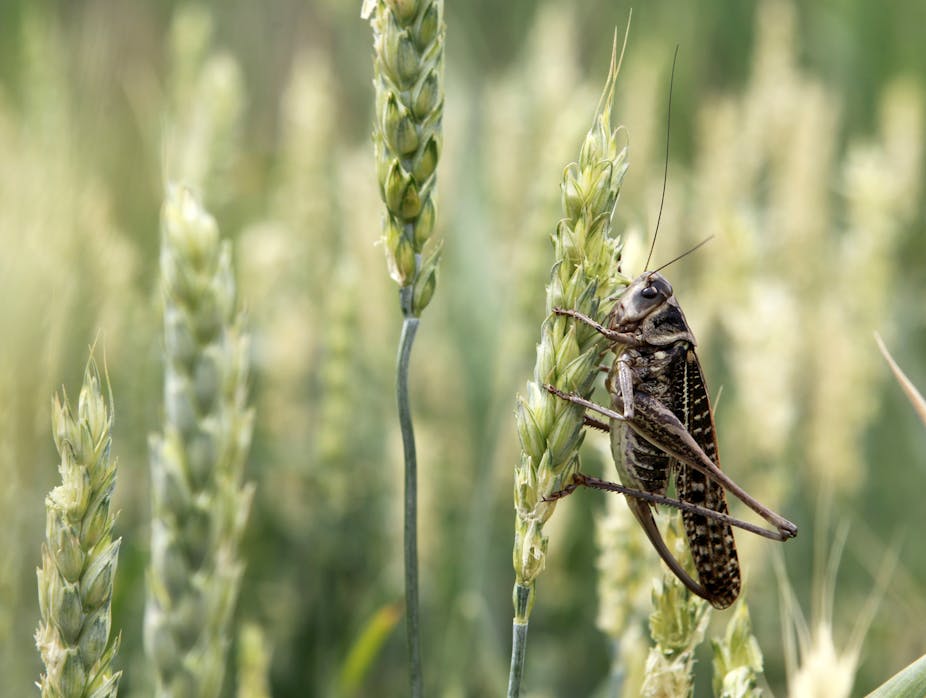This article is not about how to prevent ants from eating your sandwich on a picnic. But it is about mankind’s greatest competitor for our global food resource: insects. We know that insects are valuable members of the food chain and without them we would not be able to survive on earth.
With the early beginnings of formalised agriculture some 11,000 years ago, a major socioeconomic change occurred that resulted in human population growth and development. But insects are equally if not more adaptable than humans. They too began to benefit from large homogenous plantings of food crops. We have been competing with them for food ever since.
At the end of the 19th century – when agriculture largely shifted from subsistence to commercial – pest problems began to threaten farmers’ livelihoods. This resulted in ever-decreasing tolerance for pests and led to the pesticide era, initially with the use of products such as Paris Green and later to lead arsenate, DDT and the new age pesticide products we use today.
But there are alternative control methods. A number are being developed and applied in fruit crops in South Africa. These methods have no detrimental effects on the environment. They leave no harmful residues on fruit. They promote sustainable fruit production. They are effective and target pests specifically. These methods are not new, and were already documented as early as 1500 BC.
Mobilising the power of the natural enemy
One way of doing this is by manipulating the environment to make it more favourable for the survival of pests’ natural enemies. This is called conservation biological control. The way this works is by improving the natural control mechanisms. This is the process of one organism feeding on another.
Augmentative biological control, instead of trying to improve field conditions for natural control mechanisms to take place, is done by breeding large quantities of the natural enemy and releasing them into the affected crop system.
This supplements natural populations. The use of natural enemies already found in the agro-ecological landscape in South Africa is preferable because they are already adapted to our climate, environmental conditions and pests.
Here are three examples:
Pathogenic nematodes which look like little roundworms are very effective control agents. They penetrate the insect, reproduce to reach high numbers and release toxic bacteria which kill the insect.
Pathogenic fungi. These can also be cultured and supplied to farmers to spray on their crops. These fungi then penetrate insect pests and cause mortality - and because they are so specific, they don’t affect beneficial organisms.
Parasitic wasps lay their eggs in the eggs and immature stages of pest insects. They then prevent further development of the pest before damage can be done to the crop.
The key to using these natural enemies effectively in orchards and vineyards is to limit pesticide applications. This creates a suitable environment for these control agents to flourish and become established. This is the focus of much research in South Africa, with many success stories.

Reducing reliance on chemical pesticides
The concept of Integrated Pest Management (IPM) was born in the 1960s to overcome the insects’ defence mechanisms toward pesticides resistance, and to halt environmental pollution. It also placed importance on health risks to farm workers and consumers and general problems associated with pesticides.
For example, reducing the use of synthetic pyrethroids and encouraging certain cover crops to grow in apple orchards has improved survival of predatory mites, which in turn feed on plant feeding mites.
The fundamental rules of IPM include:
Monitoring: First assess whether pest control is necessary through the use of scientifically established monitoring systems and economic thresholds.
Responsible action: If action needs to be taken, first use alternative non-chemical control methods (such as augmentation of natural enemies if available) with pesticide applications as the last option. If populations are too high, then only should pesticides be used. Ideally this should not be done regularly, but only to bring pest populations down to a level at which they can then be sustainably managed by alternate methods.
The aim here is to reduce the reliance on synthetic chemical pesticides, while still accepting their use in a responsible way that encourages safe integration with other methods.
New method being adopted
The Sterile Insect Technique is another method gaining traction in South Africa. Here the pest insect is mass-reared in insectaries. The pupae or adults are then sterilised and released into the crop. The sterile insects mate with the wild pest insects, which result in no offspring being produced and the population declining over time.
This method is best used on an area-wide basis, rather than at an orchard or farm scale. This is because the target pests are usually highly mobile and shelter in the natural environment and in home gardens.
This method is currently being applied with great success against major economic pests in South Africa’s Western Cape province. It also integrates well with biological control, because the sterile eggs that are laid through the sterile technique method are then targeted by natural enemies. This allows their numbers to build up so that they can be more effective control agents.
A complementary control method involves flooding the crop environment with insect pheromones. This effectively prevents mating of specific pest insects.
The responsible use of chemical pesticides therefore includes applying pesticides to avoid affecting beneficial organisms like bees, or the pests’ natural enemies that occur in the same space. It is further important to always first establish if and when pesticides need to be applied through using sound monitoring systems, as this will prevent unnecessary application of pesticides.

